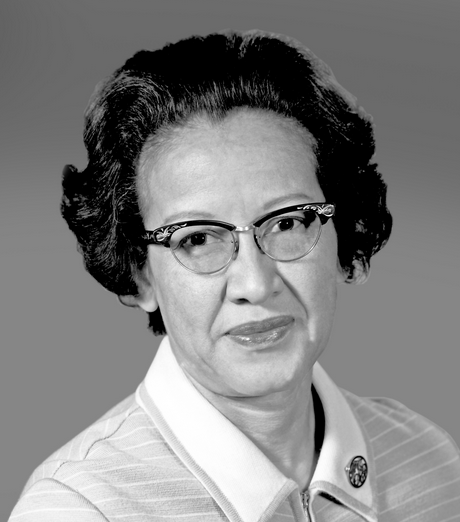
For a while, I’ve been thinking of restarting my Herstory blogs and have been amassing a list of inspirational women. Yesterday, I heard of the death of one of these women – Katherine Johnson – at the age of 101. Katherine was born in West Virginia in 1918 and was a child prodigy where maths was concerned; she entered high school at age 10. In her home town of White Sulphur Springs, the school for African-Americans normally stopped at the eighth grade. However, Katherine’s father, was determined that Katherine should fulfil her potential, so he drove the family 120 miles to another town, Institute, where Katherine could complete high school, and enrol into college. For eight years, he rented a house for the family to stay during the school year and travelled each day to White Sulphur Springs, for his job at a hotel. This allowed all four of his children to go to high school and college. Katherine skipped several grades, and graduated from West Virginia State college at just 18, with degrees in both mathematics and French. She married in 1939 and had planned to continue her education, when she became one of only three black students, and the first black woman, to be enrolled at West Virginia University graduate school, but became pregnant in her first year and chose to withdraw.
In 1953, Katherine began working for NASA’s predecessor, the National Advisory Committee for Aeronautics as one of their team of women ‘computers’ – these were the days when even calculators were not reliable and the number crunching was done by humans. According to NASA historian Bill Barry, “The women were meticulous and accurate… and they didn’t have to pay them very much.” The office was segregated and Katherine worked in the West Computing section with other black women. Their table at the cafeteria had a sign that said ‘coloured computers’. At first Katherine didn’t even realize that the restrooms were segregated, since the restrooms for white employees weren’t marked and she didn’t see any coloured bathrooms. When confronted with her mistake, she ignored the comment and continued to use the white restrooms.
In 1956, her first husband, James Goble, died from a brain tumour. But Katherine maintained her promise to allow her daughters to attend college, juggling the demands of being a single working mother by assigning chores to the girls.
When the space race began in the early 60s, Katherine’s equations helped to accurately calculated the trajectories of Alan Shepard’s flight when he became the first American to reach space. She also worked on John Glenn’s orbit around the earth; her reputation was so great that he requested that she check all the computer’s calculations on trajectories and entry points. Women weren’t usually included in space briefings but Katherine asked permission to go. Later in the decade, Katherine played a pivotal role in planning the Apollo 11 mission, and in 1970 worked on emergency procedures to rescue the lunar lander in the Apollo 13 mission.
Later in her career, Katherine co-authored one of the first textbooks on space travel, and contributed to plans for a mission to Mars. And still, she was barely known outside NASA. Her long-overdue recognition came from President Obama in 2015 when he awarded her the Presidential Medal of Freedom for her work in STEM (science, technology, engineering, and mathematics), the highest honour a civilian can receive. In 2016, Hidden Figures brought her story to a wide audience. Since then, NASA have named a facility in her honour, and led the many tributes to her yesterday, describing her as an “American hero” whose “pioneering legacy will never be forgotten”.
